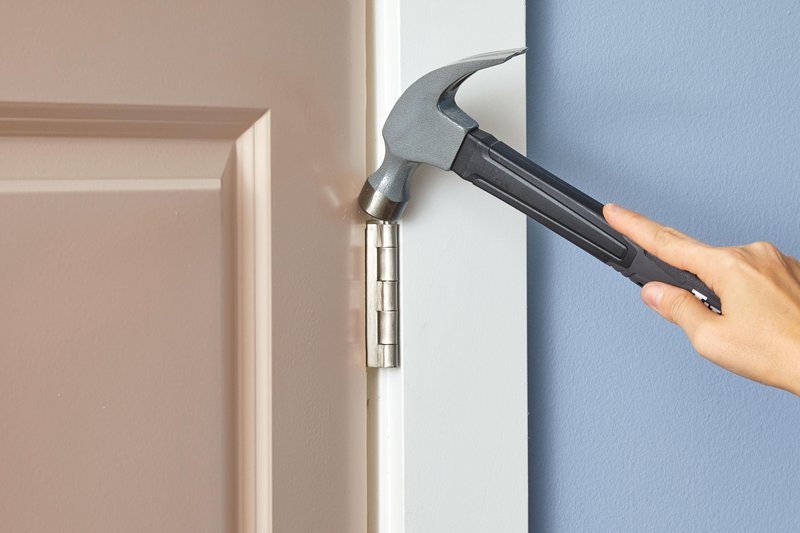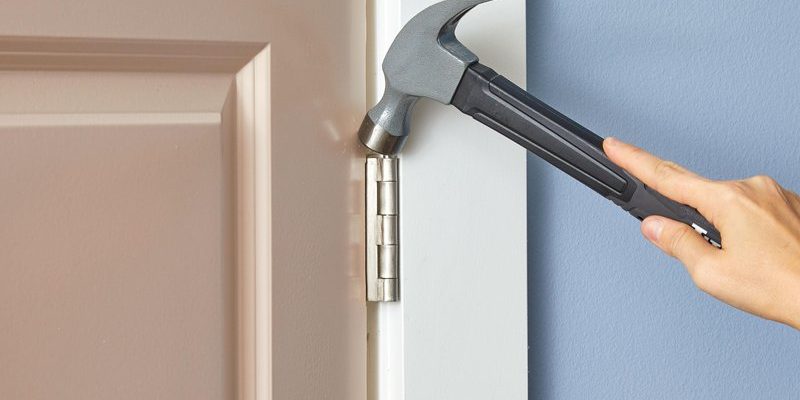
Now, if you’re new to this, using a small hammer might seem straightforward, but there are some nuances worth understanding. Whether you’re fixing a squeaky door or re-hanging a cabinet, knowing how to handle your hammer can make all the difference. Think of it as your ‘tapping technique’—it’s about being precise and gentle, just like a surgeon making careful incisions. So, grab your favorite small hammer, maybe something like a 16-ounce claw hammer, and let’s dive into how to use it effectively for those hinge pins.
Understanding Your Small Hammer
Before you start tapping away, let’s get to know your small hammer a bit better. A small hammer is generally lightweight, ranging from 8 to 16 ounces. This makes it ideal for tasks requiring finesse. It’s essential to find one that feels comfortable in your hand; you don’t want a hammer that feels clumsy or heavy when performing delicate work.
When choosing a small hammer, look for one with a smooth face and a sturdy handle. A smooth face prevents marking your work surface, while a comfortable grip allows for better control. You might also find hammers that feature a magnetic nail holder, which can be handy if you’re doing some installations along with hinge pin adjustments. Honestly, picking the right hammer is like choosing the right paintbrush for an artist—it sets the tone for your work.
Why Use a Small Hammer on Hinge Pins?
Using a small hammer for hinge pins is beneficial for several reasons. First, hinge pins can be pretty delicate, especially in older doors. A heavy hammer could cause damage, such as bending the pin or even cracking the door frame. With a small hammer, you can apply just the right amount of force to nudge the pin without risking damage.
Additionally, a small hammer provides better control, allowing you to focus on that precision tapping. Imagine trying to write with a giant marker versus a fine-tip pen; the latter lets you express details more easily. Similarly, the control you gain with a small hammer means you can tap those hinge pins gently and accurately.
How to Prepare the Area for Work
Before you start banging away, you need to prepare the area. Clear any furniture or obstacles around the door to give yourself enough space to work. This is crucial because working in a cramped area can lead to slips and accidents.
Next, it’s smart to have a cloth or some paper towels handy. If you’ve been dealing with squeaky hinges, there’s a good chance there’ll be some grease or residue. Wiping down the area ensures a clean work surface, making it easier to focus on the task at hand. Plus, it’ll keep your tools cleaner.
Check the hinges themselves. Are they rusted or damaged? If they are, you might want to replace them instead of just tapping the pins. A small hammer can help with removing old pins, but if the hinge itself is beyond repair, it might be time to upgrade. Here’s the thing: taking a few minutes to prep can save you time and grief later.
Steps for Gently Tapping Hinge Pins
Now that you have your area prepped and your small hammer ready, let’s go through the steps to gently tap those hinge pins:
1. Identify the Pin: Look at the hinge and find the pin you want to adjust or remove. This is usually the long piece that runs vertically through the hinge.
2. Position the Hammer: Hold the small hammer comfortably in your dominant hand. Position the face of the hammer just above the pin. You want to have a clear line of sight to ensure precision.
3. Tap Gently: Here’s where the finesse comes in. Start by tapping the pin gently. You don’t need to swing hard; a light, steady tap should do it. Think of it like giving the pin a friendly nudge.
4. Monitor Progress: As you tap, keep an eye on the alignment of the hinge. If the pin starts to move down and the hinge loosens, you’re doing it right. If you encounter resistance, stop and reassess. You don’t want to force it.
5. Complete the Adjustment: Once the pin is in the desired position, you can give it a final gentle tap to secure it. Just make sure the hinge moves freely afterward, indicating it’s not too tight.
Common Mistakes to Avoid
It’s important to be aware of some common missteps when working with hinge pins. Many beginners might think “harder is better,” but that’s not the case here. Applying too much force can damage both the pin and the hinge. Remember, your goal is to be gentle, like coaxing a shy kitten out from under the couch.
Another mistake is not checking if the hinge is the actual issue. Sometimes, squeaky doors might have problems elsewhere, like with the door frame or alignment. Don’t just assume it’s the pin. Take a moment to inspect the whole door system before diving in.
Lastly, don’t forget to clean your tools afterward. A small hammer can get greasy or dirty, especially when handling hinge pins. Wiping it down not only extends the tool’s life but keeps your workspace organized for next time.
Alternatives to Using a Small Hammer
If you’re not quite ready to wield a small hammer or find it uncomfortable, there are alternatives for adjusting hinge pins. One option is to use a rubber mallet. This can be a great substitute because it’s softer than a traditional hammer, absorbing some impact and providing a gentler touch on your pins.
Another possibility is using a small block of wood as a buffer. You can place the wood against the pin and tap it with a larger hammer or mallet. This method reduces the risk of damage because the wood absorbs much of the shock and pressure, protecting your hinge.
If you’re dealing with stubborn pins that won’t budge, consider using a bit of lubricant. A few drops of penetrating oil can work wonders, helping the pin slide out more easily without excessive force. Keep in mind that you may still need your small hammer to help gently persuade the pin.
When to Seek Professional Help
Often, gently tapping hinge pins is a simple task you can do yourself, but there are times when it’s best to call in a professional. If you find that your hinge pins are consistently sticking or you notice damage to the hinge itself, it could indicate a more significant issue. Maybe the door frame is warped, or the entire hinge assembly needs replacing.
Another sign it’s time to seek expert assistance is if you’re unsure about the process or feel uncomfortable attempting it. There’s no shame in asking for help. A professional can assess the situation and provide the right solutions without risking further damage or injury.
Finally, if you’ve tried adjusting the hinge pins multiple times and there’s no improvement, it may be time to consult a hardware store or contractor. They can offer insights and might even suggest better tools or methods specific to your situation.
Using a small hammer to gently tap hinge pins is a straightforward task with the right approach. With a little preparation and understanding of your tools, you can keep your doors functioning smoothly and quietly. Remember, it’s all about being gentle and precise, much like tending to a garden. Just a little care can lead to big improvements.
Whether you’re fixing a squeaky door or installing a new cabinet, knowing how to handle your small hammer makes the process easier. So, the next time you’re faced with stubborn hinge pins, don’t fret—just grab your small hammer and give it a gentle tap. Happy repairing!
